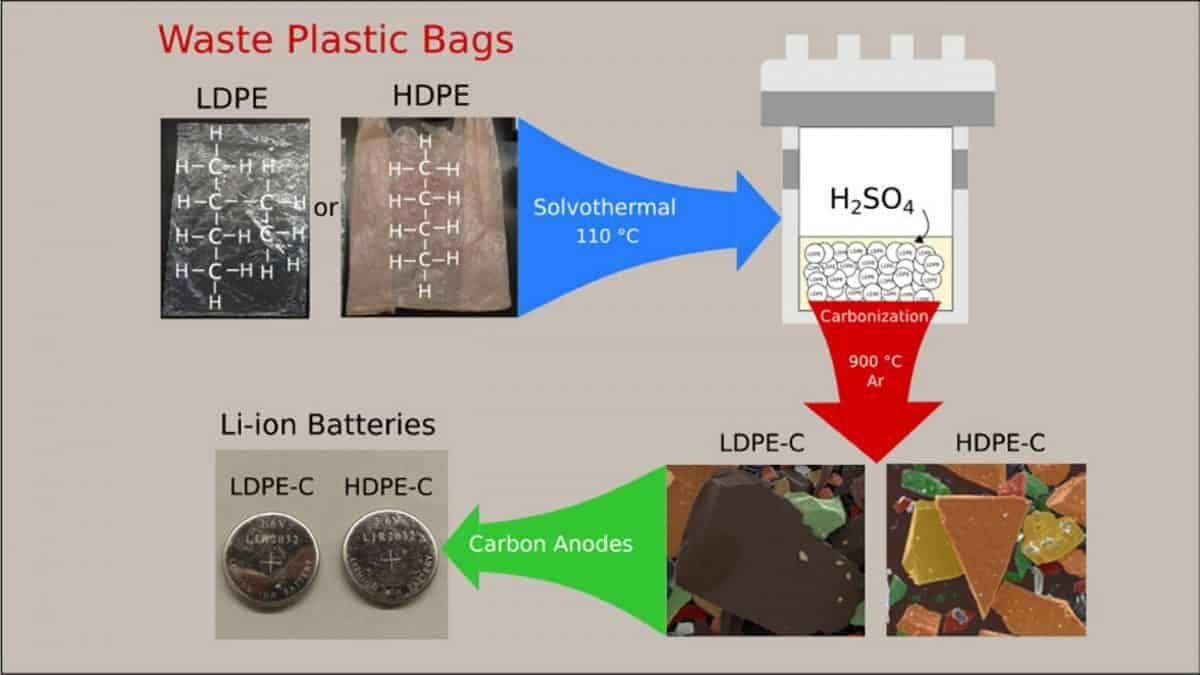
Used plastic bags may soon be powering our smartphones, according to new research.
Scientists have managed to convert them into the carbon chips found in the batteries of almost every device.
It could combat plastic pollution and boost production of lithium batteries used in portable electronics and toys to medical implants such as pacemakers.
Dr Vilas Pol, a chemical engineer at Purdue University, West Lafayette, Indiana, said: “The resulting batteries performed comparably to commercial batteries.”
His technique is based on ‘upcycling’ – taking a cheap product and making it more valuable.
Lithium batteries are more expensive than ordinary alkaline ones but have a significantly longer lifespan – making them increasingly attractive to consumers.
Dr Pol said: “Plastic bag pollution has become a huge environmental problem – prompting some cities and countries to heavily tax or ban the sacks.
“But what if used plastic bags could be made into higher-value products?”
His team found a way of making them into carbon chips that could be used as anodes for lithium-ion batteries.
Made of carbon – usually graphite – an anode is the negative electrode used in the rechargeable batteries of smartphones.
Dr Pol said: “Many plastic bags are used only once and then disposed, ending up in landfills, oceans and elsewhere in the environment, where they can take hundreds of years to decompose.”
Experts have long suspected polyethylene in plastic bags could be a cheap source of energy-storing carbon.
But their previous attempts at alchemy have either failed or required processes that are too expensive or complex.
Writing in ACS Omega, Dr Pol and colleagues say they have solved the problem with a simple and efficient approach.
They immersed polyethylene plastic bags in sulphuric acid and sealed them inside a chemical reactor.
This heated the sample to just below the melting temperature of around 150 degrees centigrade.
Dr Pol said: “This treatment caused sulphonic acid groups to be added so the plastic could be heated to a much higher temperature without vaporising into hazardous gases.”
When they removed the sulphonated polyethylene from the reactor and heated it in a furnace in an inert atmosphere it became pure carbon.
The researchers ground the carbon into a black powder – and used it to make anodes for lithium-ion batteries.
Dr Pol said: “Globally, around 300 million tons of plastic were produced in 2013 to fulfil the growing demand.
“As plastic slowly degrades with sunlight, it becomes smaller and starts releasing toxic chemicals into the environment. This approach disturbs our ecosystem.”
In 2014 it was estimated at least 5.25 trillion plastic particles weighing around 269,000 tons were in the sea.
Dr Pol said: “The described novel upcycling approach totally gets rid of low and high density waste plastic bags by converting them into functional carbonaceous materials.”
In simple terms smartphone batteries contain a metal called lithium along with a positive and a negative electrode – a cathode and an anode, respectively.
The cathode and anode are separated by an organic liquid called an electrolyte and a porous material called the separator.
The lithium travels through the separator, within the liquid, between the two – producing electrical energy.
Lithium batteries are being used in a host of products from smartphones to mega powerful chainsaws and electric cars that travel hundreds of miles on a single charge.
But that growth has led to concerns we may soon run out of the batteries. There is a demand for cheaper materials to prevent a future price spike and shortage.
By Mark Waghorn